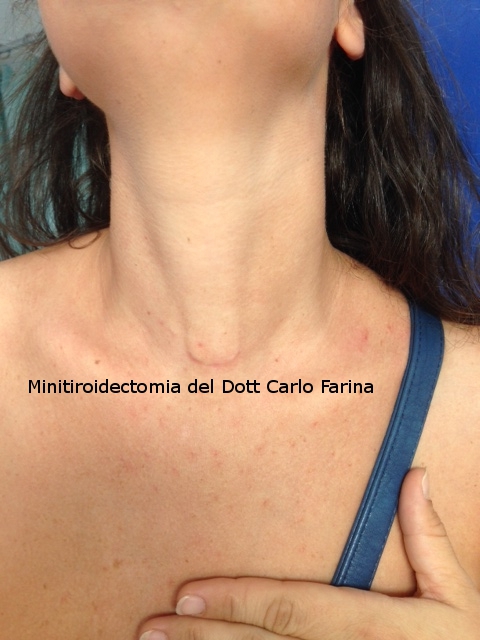Paratiroids are small neck glands that are generally in contact with and behind the thyroid gland. In 85% of cases there are 4, and in the remaining 15% there are more than 4 parathyroids.
INDEX: 1. WHAT ARE THE PARATIROID 2. MAIN CASE OF IPARPARATIROIDISM 3. SURGICAL TECHNIQUES 3.1 PARATIROIDECTOMY 3.2 MINIINVASIVE or MIVAP TECHNIQUES WITH PARATIROIDECTOMY 1. WHAT ARE THE PARATIROID Paratiroids are small neck glands that are generally in contact with and behind the thyroid gland. In 85% of cases there are four, and in the remaining 15% there are more than 4 parathyroids. Parathyroidists secretion of PTH (parathormone): a very important substance in our body as it regulates the metabolism of Calcium and Phosphorus. A reduced parathyroid function (Ipoparathyroidism) results in a decrease in the amount of calcium in the blood (Ipocalcemia) and an increase in phosphorus. Conversely, an excess of parathyroid function (hyperparathyroidism) involves excess calcium in the blood (hypercalcemia) and a reduction in phosphorus. The PTH acts directly or indirectly on three organs: Bone, kidney, intestine. • In bone stimulates the release of Calcium and Phosphorus • Rene acts by reducing the elimination of Calcium and favoring Phosphorus. PTH also stimulates the kidney to produce Vitamin D. • Intestine has an indirect action as vitamin D increases calcium intestinal resorption. 2. MAIN CASE OF IPARPARATIROIDISM The main cause of Hyperparathyroidism is Parathyroid Adenoma. The resulting hypercalcemia causes several symptoms of which the most common are Osteoporosis and Renal Calcrosis but may also occur with tiredness, irritability, drowsiness, depression, gastric ulcer, hypertension, muscle aches. Parathyroid Adenoma is a benign tumor whose only cure is represented by surgical removal: Paratiroidectomy. To locate the diseased glands (often more than one), both the Neck Ultrasound and the MIBI Scintigraphy are successfully used. 3. SURGICAL TECHNIQUES 3.1. parathyroidectomy As for thyroidectomy, the use of miniinvasive techniques with a miniincision of three cms and the search for pathological parathyroidism is also used for the removal of parasitroids. After removal, a patient's blood is drawn to evaluate the PTH (paratormone). If the parathyroid responsible for hyperparathyroidism is the one removed, the PTH value decreases significantly in a few minutes. Otherwise you go looking for the other parathyroids. In this case, a drainage is also provided for 24 hours and the shelter is two nights. There are no points to remove but only waterproof patches. 3.2. PARATIROIDECTOMY WITH MINI-VASIVA OR MIVAP TECHNIQUES It varies from parathyroidectomy to the aid of optics that enlarge the image to make the intervention even smaller, below 2 cm. Although technically more complex, the advantage is that it allows for easier exploration of all parathyroids. There is rarely a need for drainage. The trauma is still lower.
